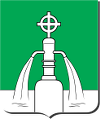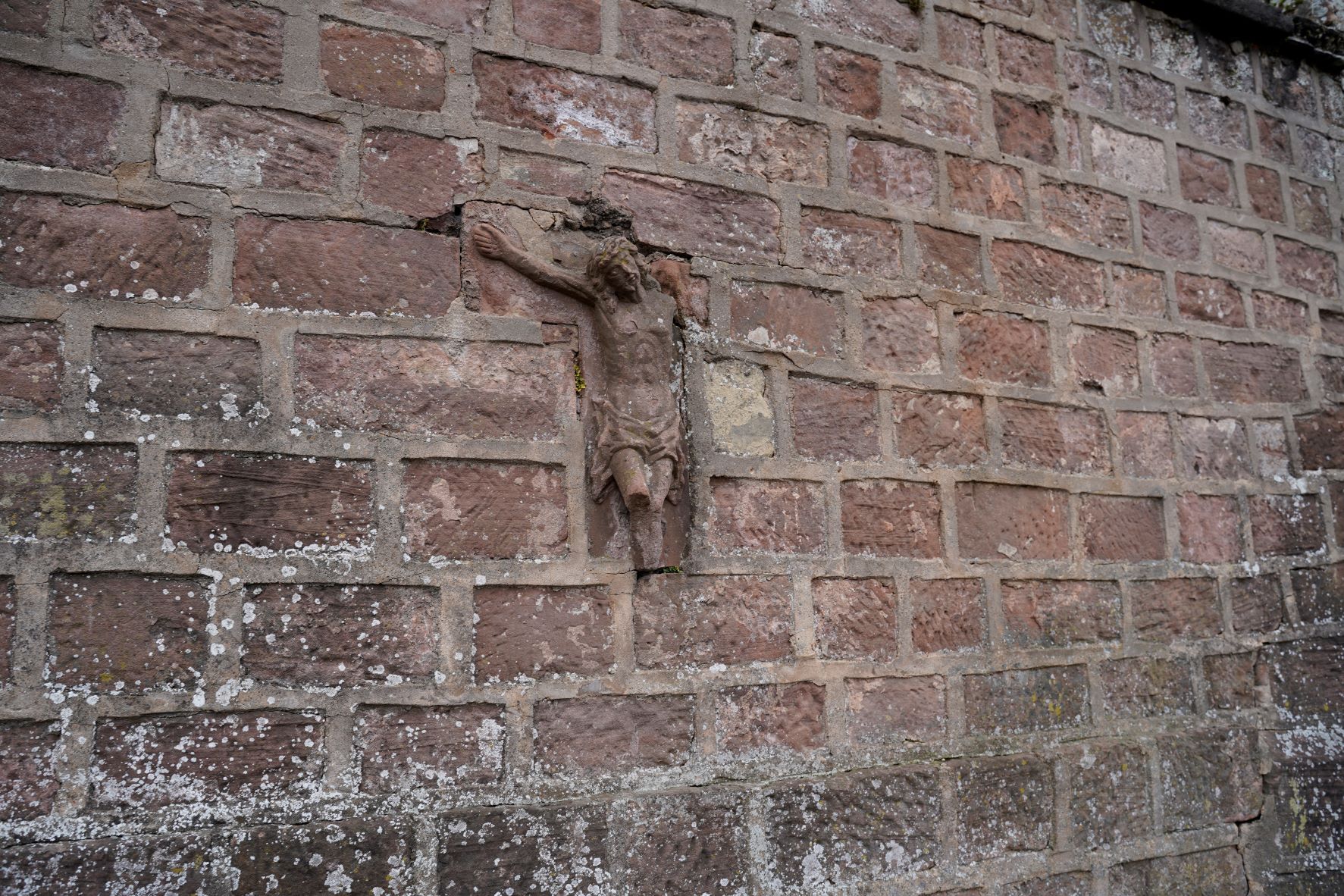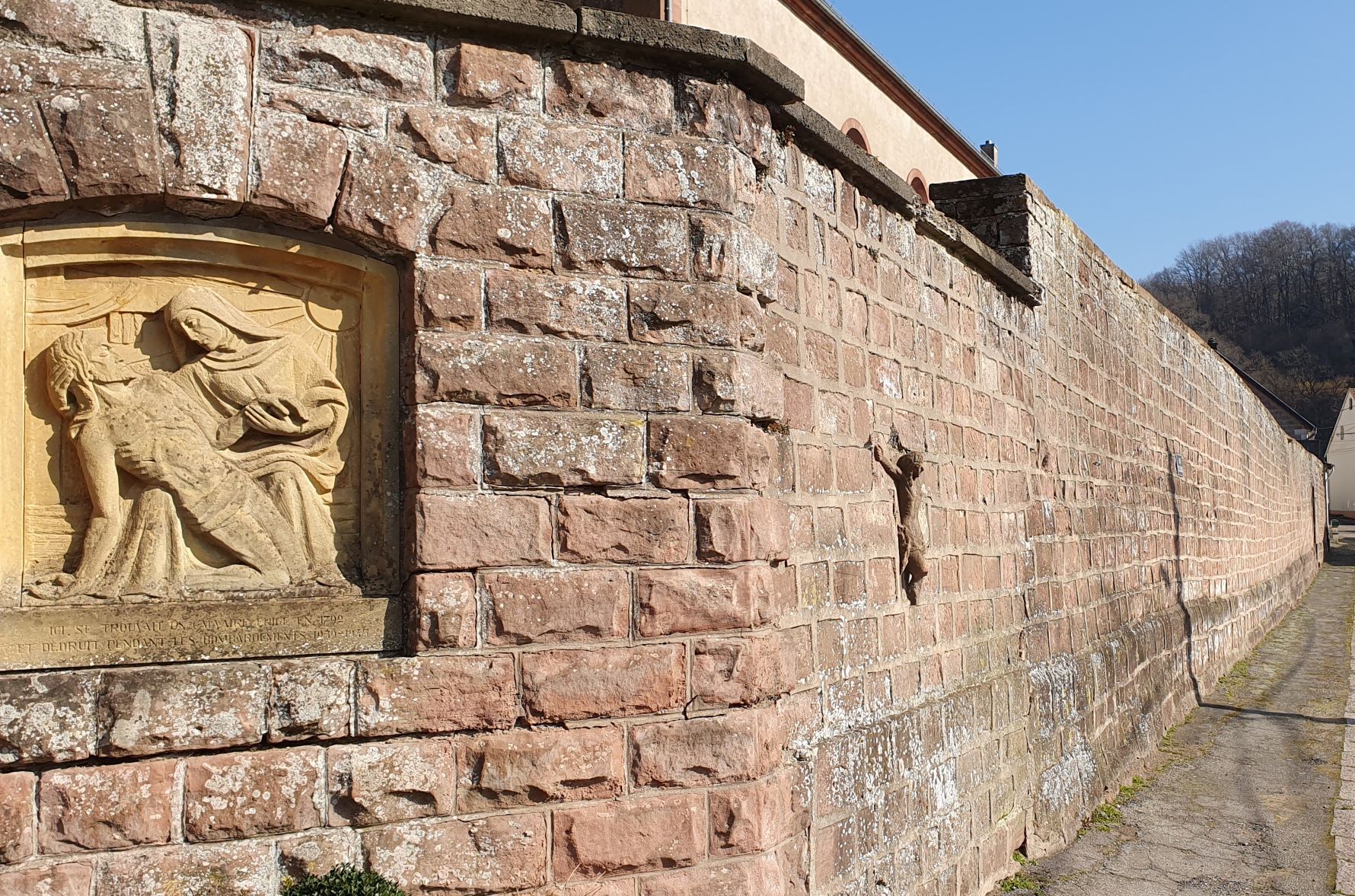
Welcome in Walschbronn
The cemetery wall
Go down the main steps and look to your left.

By the end of the 16th century, the castle was in a state of disrepair. Its large blocks of cut sandstone were then reused for the first three levels of the cemetery wall surrounding the church, but also for the walls bordering the stream or the foundations of certain houses. On this wall, you can also see the reuse of a sandstone high relief from 1792 representing Christ on the cross, the only vestige of a calvary that stood in the cemetery before the Second World War.
The reuse of stones
After the Thirty Years' War, the hovels show that there were formerly more than 400 stone houses. It is probable that the fountain alone contributed to the flourishing state of the village, since neither the land nor trade could have helped it. In the early 19th century, a drawing shows the village with several large multi-storey houses with the still imposing castle ruins in the background.
The reuse of stones is visible, not only for the church walls, but also in the gardens of the Rue de l'Ecole, the grotto, etc.
